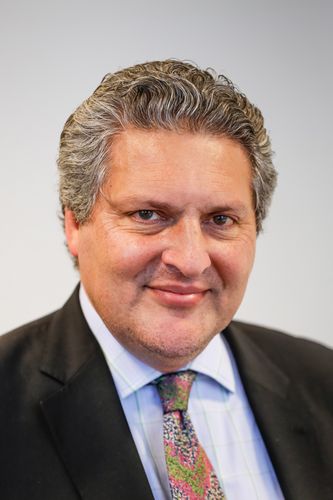I WAS RIGHT on cue three weeks ago when, at the time Michael Sherwood announced his departure, I said that something was afoot at Goldman Sachs. While I had no specific knowledge Gary Cohn would be heading into public service as head of the National Economic Council in the Trump presidency, I did foresee that he might not be long for the Goldman world. “Can you ever get tired of being next in line to run Goldman Sachs?” I pointedly asked. I guess you can.
The elevation of Harvey Schwarz and David Solomon to replace Cohn as co-presidents and co-COOs was no surprise. I’d telegraphed that possibility and in truth it wasn’t much of a stretch. They’re highly accomplished performers, long-term alumni and Goldman culture carriers. Nor were the appointments of Richard Gnodde and Pablo Salame as vice-chairmen to populate that empty layer in the GS structure a surprise either. I’d included them in my list of executives fancied for continued inner-circle status.
A lot has already been written about Marty Chavez’s promotion to replace Schwartz as CFO so no need for me to repeat it all. Suffice to say the firm’s chief information officer, who among other things has responsibility for the technology division, is not your average Goldman guy.
Beyond anything else, take a look at his bio. It’s more varied than anyone else’s on the firm’s management committee. He’s interspersed time in investment banking with time as a technology entrepreneur, co-founding Quorum Software Systems (for hydrocarbon and energy business management) and Kiodex (for commodity risk solutions).
ONE OF THE strands of the Chavez chatter this past week that I found fascinating was how hard he’d worked to persuade Goldman to provide clients with access to the firm’s in-house trading and risk-management software and tools, and how much opposition he’d encountered in his quest.
Equally fascinating is what the promotion of a technology specialist means - and should mean - for the investment banking industry.
Reticence on the part of banks to part with in-house software, analytics and modelling capabilities, tools, apps and other proprietary solutions is an intriguing aspect of the evolution of corporate and investment banking. Over the years, it’s been a stumbling block as banks have fiercely protected what they have seen as core intellectual property.
Today, as the industry starts seriously to confront the impact of technology, as banks morph into quasi-technology companies, as fintech and blockchain start to pose existential threats to parts of the banking ecosystem, the time is surely ripe, first, for banks to start treating clients less as traditional arms-length clients and more as technology partners; and, second, for banks to push people with technology backgrounds up the chain to start to populate executive committees and management committees. Call it another variation of diversity.
Banks are heavily immersing themselves in automation and digitisation programmes to facilitate and expand client activity. Given the mushrooming of in-house labs and tech campuses, banks have been slow to see tech professionals in the same light as bankers or traders - ie as future industry leaders. They’re wrong to do so.
When AIG president and CEO Peter Hancock was head of derivatives at JP Morgan in the 1990s, he revolutionised the thinking at the time by taking the notion of in-house proprietary trading tools that were in effect used to create arbitrage profits for the firm’s dealers (often at the expense of clients) and turning it on his head by opening derivatives pricing assumptions to end-users. That thinking was instrumental in giving JPM a huge market share of fixed-income and credit derivatives activity - a key profit driver as the use of derivatives industrialised into the early 1990s. Other banks were slow to follow suit.
TIMES HAVE CERTAINLY changed and banks are realising - albeit slowly - that facilitating client activity via shared apps, models, analytics, software, trading tools and open platforms is the way forward.
In a video on the Goldman website, Chavez talks about the impact of technology (specifically open-source software and the Cloud) on the way banks operate. He acknowledges the industry is at an early stage of understanding how paradigm shifts in technology will impact clients.
On the basis that SecDB, Goldman’s enterprise-wide database and pricing system, almost literally had to be forcibly wrested from the tightly folded arms of a very reluctant Gary Cohn and given to clients, you get the impression it will take some time for the banking industry to move to an open-house format.
If the emergence of direct market access and high-frequency trading in the 2000s had forced banks’ hand to some extent, banks are pushed today by the more urgent if veritable old-world drivers of regulation and the urgent need to reduce costs to re-think the client piece.
That and the constant threat of disruption will give techies more power in the banking industry.
If that’s the case, the promotion of Chavez to such a senior position - particularly as finance and technology start to amalgamate - will go down as another pre-emptive and prescient Goldman move.
